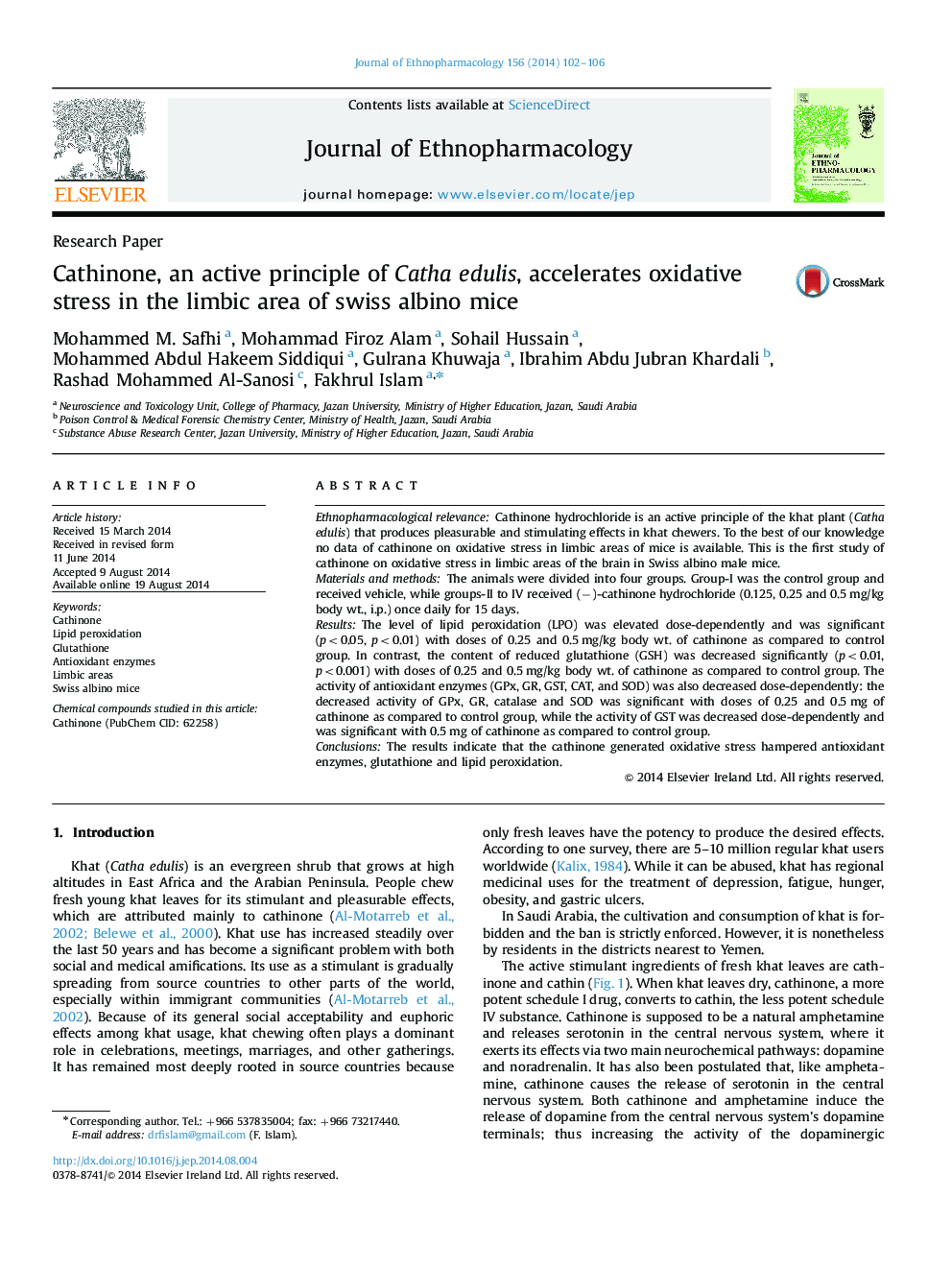| Article ID | Journal | Published Year | Pages | File Type |
|---|---|---|---|---|
| 2545247 | Journal of Ethnopharmacology | 2014 | 5 Pages |
Ethnopharmacological relevanceCathinone hydrochloride is an active principle of the khat plant (Catha edulis) that produces pleasurable and stimulating effects in khat chewers. To the best of our knowledge no data of cathinone on oxidative stress in limbic areas of mice is available. This is the first study of cathinone on oxidative stress in limbic areas of the brain in Swiss albino male mice.Materials and methodsThe animals were divided into four groups. Group-I was the control group and received vehicle, while groups-II to IV received (−)-cathinone hydrochloride (0.125, 0.25 and 0.5 mg/kg body wt., i.p.) once daily for 15 days.ResultsThe level of lipid peroxidation (LPO) was elevated dose-dependently and was significant (p<0.05, p<0.01) with doses of 0.25 and 0.5 mg/kg body wt. of cathinone as compared to control group. In contrast, the content of reduced glutathione (GSH) was decreased significantly (p<0.01, p<0.001) with doses of 0.25 and 0.5 mg/kg body wt. of cathinone as compared to control group. The activity of antioxidant enzymes (GPx, GR, GST, CAT, and SOD) was also decreased dose-dependently: the decreased activity of GPx, GR, catalase and SOD was significant with doses of 0.25 and 0.5 mg of cathinone as compared to control group, while the activity of GST was decreased dose-dependently and was significant with 0.5 mg of cathinone as compared to control group.ConclusionsThe results indicate that the cathinone generated oxidative stress hampered antioxidant enzymes, glutathione and lipid peroxidation.
Graphical abstractFigure optionsDownload full-size imageDownload high-quality image (150 K)Download as PowerPoint slide
